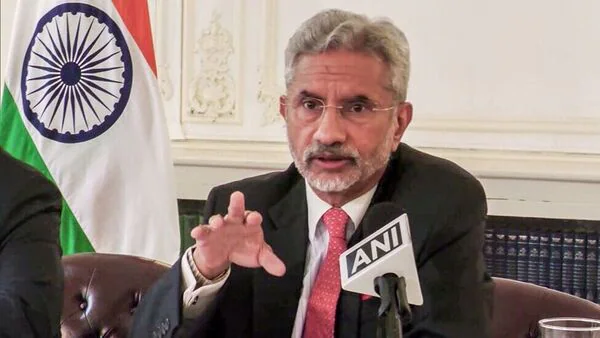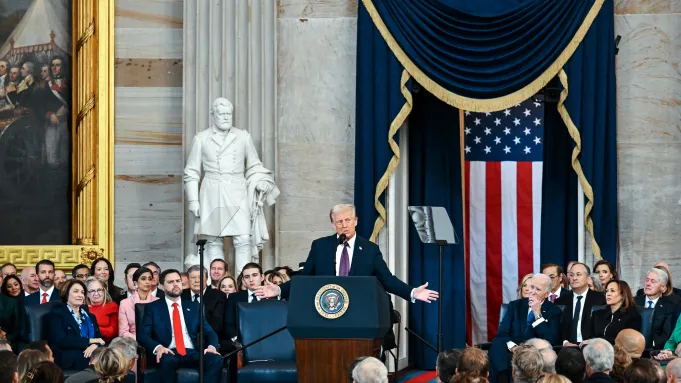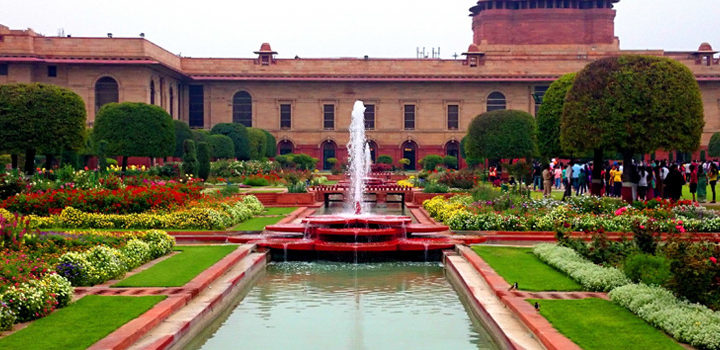As Trump takes office in the US for his second term as President, I am tempted to, like hundreds of other analysts, immerse my limited cognitive abilities into various connotations, as his ‘shock and awe’ therapy unfolds for the world. On the other hand as the world is oiling its shock absorbers, countries, both allies and not so aligned, are looking to make the best of his many idiosyncrasies.
With the historic 200 Executive Orders signed on day 1 in office, the ‘Master Disruptor’ Trump and his times could herald both dazzling opportunities and thorny challenges for India, molded by his administration’s audacious policies on trade, defense, foreign relations, and immigration. While Trump’s unflinching “America First” ethos and deal-driven worldview might unlock new corridors of cooperation, they also harbor the seeds of potential discord, making it a double-edged sword for India’s strategic ambitions.
India, for one, is wanting to look at this Trump period as one where the chemistry between Prime Minister Modi and the US President is on a super comfortable plinth and as S Jaishankar, who represented Government of India at the oath taking, in his first interaction with Secretary of State Marco Rubio in Washington, put it, was based on trust. ‘The level of trust are very high and is a more systemic sentiment,’ he said in his first Press conference in US in the brand new avatar of the second Trump era.

To start with, one advantage for India could be the magnification of strategic defense ties. Trump’s administration, during his first term, spotlighted India as a linchpin in the Indo-Pacific strategy, nurturing a robust defense partnership. For instance, his executive order championing the sale of cutting-edge U.S. military technology to allies could arm India with state-of-the-art weaponry and bolster its defense capabilities. A second term might turbocharge this collaboration, with an infusion of high-stakes arms deals, coordinated military maneuvers, and sharper intelligence sharing. Such measures would fortify India’s military modernization, girding it against formidable neighbors like China and Pakistan. Trump’s hawkish stance on China—embodied in tariffs, trade restrictions, and a campaign to curb Beijing’s global dominance—dovetails seamlessly with India’s strategic goals.
As India grapples with border skirmishes and the shadow of Chinese influence, a reinvigorated Quad alliance (featuring India, Japan, Australia, and the U.S.) could amplify India’s clout in the region. Furthermore, Trump’s penchant for economic protectionism, designed to undercut China’s dominance, might serendipitously benefit India, positioning it as a beacon for global supply chain diversification.
On the counter-terrorism front, a mutual distaste for extremism could cement an even deeper partnership, as Trump’s uncompromising approach aligns snugly with India’s priority of quelling threats from Pakistan and Afghanistan.
Yet, the glitter of these prospects dims against the backdrop of daunting challenges. Trump’s iron-fisted immigration policies, epitomized by his executive order suspending visa programs like the H-1B to safeguard American jobs, have already sent shockwaves through India’s technology sector. A continuation or escalation of these policies could throw a wrench into India’s IT juggernaut and erode opportunities for its skilled workforce in the U.S. Although much will be seen as times unfold.
On the economic front, Trump’s fixation on slashing trade deficits could sow seeds of contention, with punitive tariffs on Indian exports and unrelenting demands for greater access to Indian markets threatening to derail bilateral trade relations.
Climate policy represents another chink in the armor. Trump’s withdrawal from the Paris Climate Accord and executive decrees dismantling environmental safeguards have upended global climate cooperation, a cornerstone of India’s sustainable development ambitions.
Lastly, Trump’s mercurial and transactional foreign policy approach often left allies navigating a minefield of unpredictability.
For India, the stakes are high in regions like Afghanistan, where stability is essential for its strategic interests, and navigating the capricious tides of U.S. policy could prove to be walking a tightrope.
In sum, a second Trump presidency would present India with a range of prospects and pitfalls. While the allure of fortified defense ties, alignment against China, and counter-terrorism collaboration beckons, the specter of immigration clampdowns, trade skirmishes, and climate discord looms large. India’s diplomatic finesse will be indispensable in weaving through this intricate tapestry, ensuring the U.S.-India relationship thrives amidst the tempestuous currents of global politics, striking a balance between opportunity and adversity. Indeed, it will require India to keep its finger on the pulse of Washington’s ever-shifting priorities while making hay where the sun shines.


